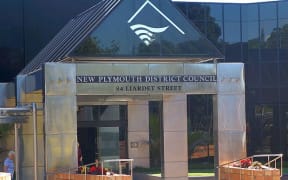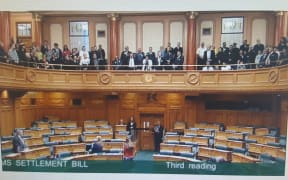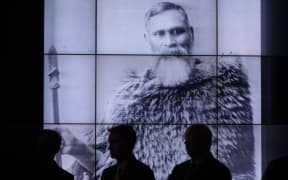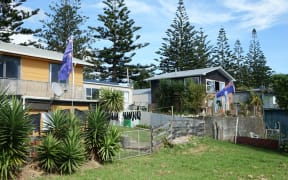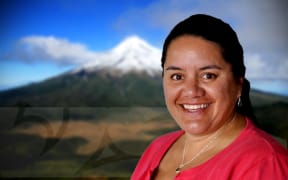The first exhibition to trace the journey of Ngāti Rārua, Te Ātiawa and allied tribes from the north to Tasman Bay in the 1830s has opened in Motueka.

The exhibition contains a series of lightboards, including this photo from the Nelson Provincial Museum of hop pickers in Motueka. Photo: RNZ / Tracy Neal
Rima Piggott, the creator of 'Mai i Hawaiki Te Ahi Ka Roa: From Our Ancestral Homelands To Our Home Fires Of Today', said it unearthed some uncomfortable truths, but the aim was to educate.
The exhibition runs until 30 June at Motueka Museum.
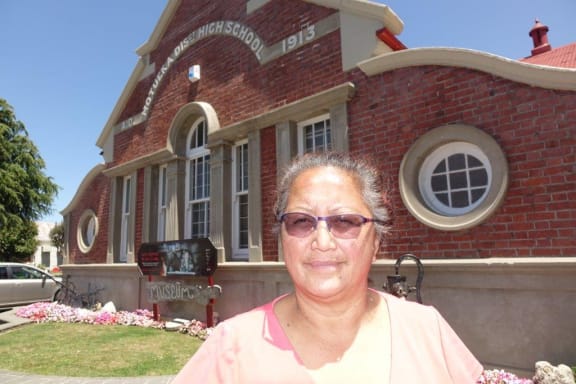
Rima Piggott Photo: RNZ / Tracy Neal
Mrs Piggott's roots run deep in Motueka. She is first and foremost Ngāti Rārua and then Te Ātiawa.
"It's about balance. It's about telling our truths from where I come from and my generation, my tūpuna's generation and for the future of our children. I just felt that ... we have got something to say."
Mrs Piggott is the Ngāti Rārua representative on the museum's trust board and said the exhibition had received help from organisations including Wakatu Incorporation and Ngāti Rārua Iwi Trust, Te Ātiawa, Te Āwhina Marae (Motueka) and Nelson Provincial Museum.
She built the exhibition on her own family story, including her father, Warren Pahia Stephens.
She said her father's years with the 28th Māori Battalion in World War II were an awakening for his cultural identity. He had struggled growing up in a household that chose to align itself more with Pākehā culture, she said.
"He loved the closeness of the Māori unit because he wasn't accepted in our community here. I guess it goes back to the Whakarewa Boys' Home where his father had placed him when he was six-year-old to try and discipline him."
Mrs Piggott said her father found himself fighting a new battle when he returned from war. He applied for a tobacco farm through the rehabilitation scheme for returned soldiers, but was declined. He watched as others returning from war who were new to the region were granted land, she said.
Her father struggled with that for a long time but returned to the small family holding to grow tobacco there.
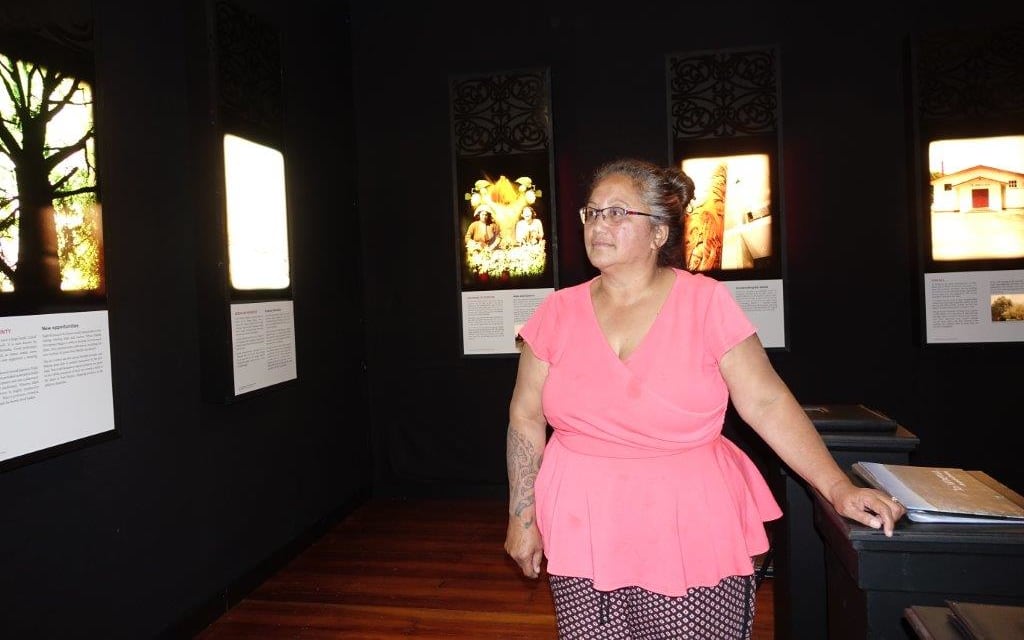
Mrs Piggott created the exhibition to depict the journey of various iwi to Tasman Bay. Photo: RNZ / Tracy Neal
Mrs Piggott, a support worker in the Motueka community and member of several local boards and iwi organisations, also wanted the exhibition to lay to rest misconceptions about treaty settlements.
"I guess it's about timing, and the open-minded acceptance by not only our local community but also the general public and also, there's been quite a bit of positive and negative around treaty settlement in the top of the south."
She said the exhibition had given her a chance to advance her real love - inter-iwi relations.
However, it has also become a reflection of the complex nature of the iwi presence in the top of the south. There are eight iwi spread across Te Tau Ihu, and one is not happy about being excluded.
Fred Te Miha said Ngāti Tama had fought for years to be recognised, which it finally had achieved through the treaty settlement process. Ngāti Tama was recognised as mana whenua in Te Āwhina Marae, he said - but, it seemed, nowhere else.
Mrs Piggott said any omission was not intentional. She said the story was essentially about Ngāti Rārua and Te Ātiawa, because those were the tribes to which she was affiliated.
"Everybody's had this opportunity to put themselves forward. Look, it's opening up the doors, actually, for all iwi to participate. It's not about a racial tension - it's not meant to be. We just need to look after those people, that whakapapa, to our iwi. That's what it's all about for us."
Mrs Piggot said she hoped to see the exhibition develop with more stories and tour around the top of the South Island.

